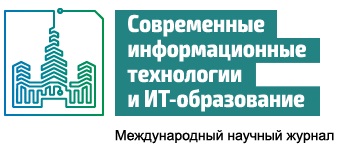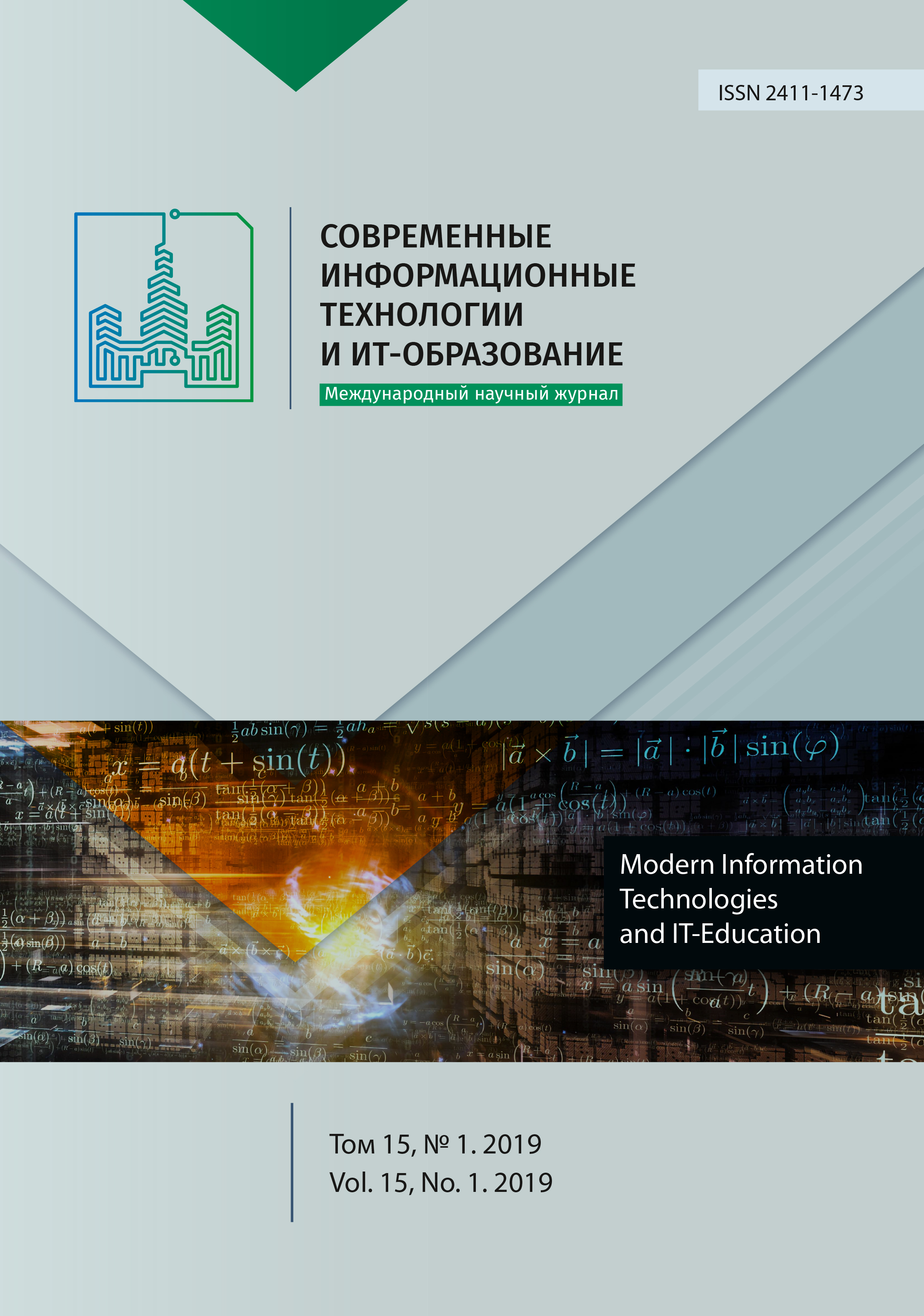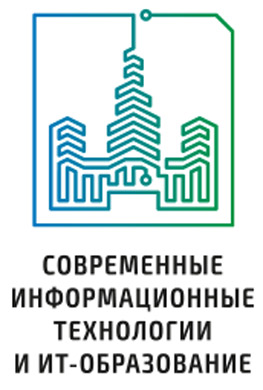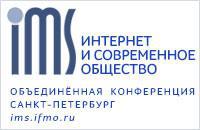МАТЕМАТИЧЕСКАЯ МОДЕЛЬ МАЛЫХ КОЛЕБАНИЙ ТЕЛА В ПОТОКЕ СРЕДЫ
Аннотация
В данной статье исследуется математическая модель тела, совершающего автоколебания в потоке квазистатической среды под действием аэродинамических сил. Выведены уравнения движения рассматриваемого тела и кинематические соотношения, связывающие фазовые координаты с углом атаки. Проведено решение уравнений равновесия и показано, что единственным положением равновесия является состояние покоя. Получены уравнения первого приближения и проведено исследование устойчивости состояния покоя с помощью критерия Гурвица. Показано, что в результате взаимодействия со средой рассматриваемое тело может совершать в потоке среды колебания с растущей амплитудой (флаттер). Построены области устойчивости на плоскости геометрических параметров: жесткости пружины и длины стержня. В математическом пакете MATLAB предложен комплекс программ, позволяющих проводить численные исследования, реализующий численное интегрирование уравнений описывающих колебания пластинки с неподвижным центром давления. Такая модель возможна при условии того, что длина стержня намного больше ширины пластинки. При запуске программы строится область устойчивости и на ней вводятся геометрические параметры: жесткость пружины и длина стержня. Далее вводится вектор начальных условий. При поиске численного решения используется процедура ode45, реализующая методы Рунге-Кутта четвертого и пятого порядка с переменным шагом. При поиске численного решения экспериментальные аэродинамические функции интерполируются кубическим сплайном. Полученное путем интегрирования решение изображается на графике в виде фигур Лиссажу. Таким образом, разработана математическая модель колебаний пластинки, проведен параметрический анализ устойчивости, с помощью комплекса программ на базе специализированной системы компьютерной математики есть возможность подтвердить полученные аналитические результаты.
Литература
[2] Belyakov D.V. Development and Features of Mathematical Model of Movement Asymmetrical Autorotating Bodies in Quasi-static to Environment. Mekhatronika, Avtomatizatsiya, Upravlenie. 2007; 11:20-24. Available at: https://elibrary.ru/item.asp?id=9609383 (accessed 16.11.2018). (In Russ.)
[3] Samsonov V.A., Belyakov D.V., Cheburakhin I.F. Vertical reduction of a heavy symmetric autorotising body in a resisting medium. Nauchnye Trudy MATI. 2005; 9(81):145-150. (In Russ.)
[4] Samsonov V.A., Belyakov D.V. Mathematical modeling of the movement of a symmetric autorotising body, promoted to a high angular velocity. Nauchnye Trudy MATI. 2006; 10(82):196-200. (In Russ.)
[5] Belyakov D.V., Samsonov V.A. Assessment of the possibilities of a new type of object rotating the airborne one. Proceedings of the XXVI Academic Readings on Astronautics. A.K. Medvedeva (ed). М., 2002. p. 100. (In Russ.)
[6] Belyakov D.V. Mathematical modeling of the motion of a rotating object descending in the air. Proceedings of the Fifth International Aerospace Congress IAC-06. Dedicated to the 20th anniversary of the launch of the MIR space station. M., 2006, p. 62-63. (In Russ.)
[7] Belyakov D.V. Mathematical model of an asymmetric autorotising body in a resisting environment. Proceedings of the International Youth Scientific XXXIII Gagarin Science Conference. M., 2007, p. 27-28. (In Russ.)
[8] McCroskey W.J., Pucci S.L. Viscous-Inviscid Interaction on Oscillating Airfoils in Subsonic Flow. A.I.A.A. Journal. 1982; 20(2):167-174. (In Eng.) DOI: 10.2514/3.51063
[9] Eroshin V.A. Heavy disk entering water at high velocity and a small angle to the free surface. Fluid Dynamics. 1995; 30(6):810-813. (In Eng.) DOI: 10.1007/BF02078193
[10] Lokshin B.Ya., Privalov V.A., Samsonov V.A. Introduction to the problem of the motion of a point and a body in a resisting medium. M.: MSU Press, 1986. (In Russ.)
[11] Parshin D.E. Qualitative analysis in the problem of the motion of an aerodynamic pendulum: dis. ... Ph.D. (Phys.-Math.). M.: MSU, 1993. (In Russ.)
[12] Selyutskiy Y.D., Samsonov V.A., Andronov P.R. On oscillations of aerodynamic pendulum. International Journal of Structural Stability and Dynamics. 2013; 13(7):1340010. (In Eng.) DOI: 10.1142/S0219455413400105
[13] Tabachnikov V.G. Stationary characteristics of wings at low speeds in the entire range of angles of attack. Trudy TsAGI. 1974; 1621:79-93. (In Russ.)
[14] Strickland J.H., Webster B.T., Nguyen Т. A Vortex Model of the Darrieus Turbine: An Analytical and Experimental Study. Journal of Fluids Engineering. 1979; 101(4):500-505. (In Eng.) DOI: 10.1115/1.3449018
[15] Karlikov, V.P., Khomyakov, A.N. & Sholomovich, G.I. Modeling of developed cavitation flows in water tunnels. Fluid Dynamics. 1987; 22(2):228-235. (In Eng.) DOI: 10.1007/BF01052253
[16] Paraschivoiu I., Delclauxе F. Double Multiple Stremeamtube model with Recent Improvements. Journal of Energy. 1983; 7(3):250-255. (In Eng.) DOI: 10.2514/3.48077
[17] Vittecoq P., Laneville A. The Aerodynamic Forses for a Darrieus Rotor with Straight Blades: Wind Tunnel Measurement. Journal of Wind Engineering and Industrial Aerodynamics. 1983; 15(1-3):381-388. (In Eng.) DOI: 10.1016/0167-6105(83)90207-6
[18] Parashivoiu I. Aerodynamics Loads and Performance of the Darrieus Rotor. Journal of Energy. 1982; 6(6):406-412. (In Eng.) DOI: 10.2514/3.62621
[19] Zhuravlev V.F., Klimov D.M. Applied Methods in Theory of Oscillations. Nauka, Moscow, 1988. (In Russ.)
[20] Malkin I.G. Theory of the Stability of Motion. Nauka, Moscow, 1966. (In Russ.)
[21] Okunev J.M. et al. Dynamics of rotating body interacting with a resistant medium. Informacionnyj Byulleten RFBR. 1997; 5. Available at: https://elibrary.ru/item.asp?id=230782 (accessed 16.11.2018). (In Russ.)
[22] Lokshin В.Ya., Samsonov V.A. On heuristic model of aerodynamical pendulum. Fundanientalnaya i prikladnaya matematika = Fundamental and Applied Mathematics. 1998; vol. 4(3):1047-1061. Available at: URL: http://www.mathnet.ru/php/archive.phtml?wshow=paper&jrnid=fpm&paperid=341&option_lang=rus (accessed 16.11.2018). (In Russ.)
[23] Eroshin V.A., Zyraynov D.V., Samsonov V.A. Two-Beam System for Recording the Parameters of Motion of a Body Entering Water. Fluid Dynamics. 2001; 36(2):178-186. (In Eng.) DOI: 10.1023/A:1019221714967
[24] Privalov V.A., Samsonov V.A. On stability of motion of a body auto-rotating in medium flow. Izvestiya RAN, Mekhanika Tverdogo Tela. 1990; 2:32-38. (In Russ.)
[25] Belyakov D.V. Mathematical modeling of the motion axisymmetric autorotating bodies in quasistatic to ambience. International Journal of Open Information Technologies. 2015; 3(3):7-16. Available at: https://elibrary.ru/item.asp?id=22993754 (accessed 16.11.2018). (In Russ.)
[26] Belyakov D.V. The problem of self-oscillations of the plate in the flow of the medium. Sovremennye informacionnye tehnologii i IT-obrazovanie = Modern Information Technologies and IT-Education. 2015; 11(2):552-555. Available at: https://elibrary.ru/item.asp?id=26167543 (accessed 16.11.2018). (In Russ.)

Это произведение доступно по лицензии Creative Commons «Attribution» («Атрибуция») 4.0 Всемирная.
Редакционная политика журнала основывается на традиционных этических принципах российской научной периодики и строится с учетом этических норм работы редакторов и издателей, закрепленных в Кодексе поведения и руководящих принципах наилучшей практики для редактора журнала (Code of Conduct and Best Practice Guidelines for Journal Editors) и Кодексе поведения для издателя журнала (Code of Conduct for Journal Publishers), разработанных Комитетом по публикационной этике - Committee on Publication Ethics (COPE). В процессе издательской деятельности редколлегия журнала руководствуется международными правилами охраны авторского права, нормами действующего законодательства РФ, международными издательскими стандартами и обязательной ссылке на первоисточник.
Журнал позволяет авторам сохранять авторское право без ограничений. Журнал позволяет авторам сохранить права на публикацию без ограничений.
Издательская политика в области авторского права и архивирования определяются «зеленым цветом» в базе данных SHERPA/RoMEO.
Все статьи распространяются на условиях лицензии Creative Commons «Attribution» («Атрибуция») 4.0 Всемирная, которая позволяет другим использовать, распространять, дополнять эту работу с обязательной ссылкой на оригинальную работу и публикацию в этом журналe.













